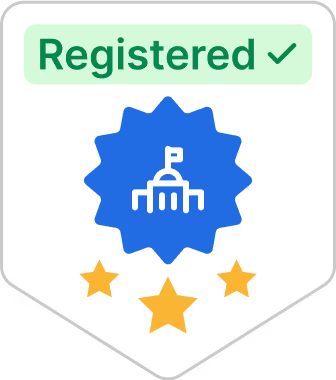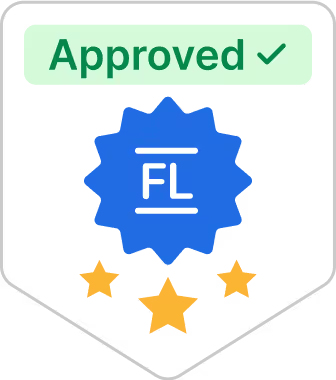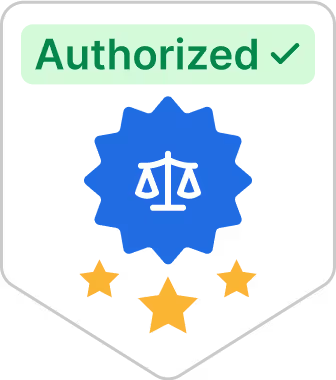Types of Financial Aid

Whether you want to pursue your passion, specialize in an in-demand field, or put your research capabilities to the test, higher education can open many doors. But aside from all the skills and knowledge that undergraduate students learn along the way, you’ll probably also learn that tuition and other educational expenses can also be quite expensive.
You certainly wouldn’t be the only one. In fact, statistics show that 83.8% of undergraduate students in the U.S. end up needing some type of financial assistance to make their college dreams a reality.1
Knowing this, the government and private organizations have developed financial aid programs for students. These programs can help you afford your college tuition, books, student services, and living expenses. Below, we’ll break down the four main types of financial aid available to college students.
#1 Grants
Grants are one of the most attractive types of financial aid you can receive. That’s because they give you free money. In other words, when you receive a grant, you don’t have to pay any federal loans back (as long as you complete the conditions of your grant program).
Grants are typically awarded to students by the federal government on a basis of needs. Some of the most common federal financial aid grants for education include:2
- Pell Grants – Students who want to earn an undergraduate degree and need financial assistance may qualify for a federal Pell grant of up to $6,895.
- Federal Supplemental Educational Opportunity Grants (FSEOG) – Students with more serious financial needs may be eligible for an FSEOG of $100 to $4,000.
- Teacher Education Assistance for College and Higher Education (TEACH) Grants – Students who plan to become teachers after college may be able to receive up to $4,000 a year from a TEACH grant. Just keep in mind that these grant funds can be converted into a loan if you don’t fulfill the teaching service requirements after graduation.
- Iraq and Afghanistan Service Grants – This type of grant is only available to students who had a parent or guardian who died during military service in Iraq or Afghanistan.
You can find out if you qualify for any of these federal aid grants by filling out the Free Application for Federal Student Aid (FAFSA) online. Your state or college may have additional grant programs, which are worth looking into as well.
#2 Scholarships
Scholarships are another type of financial aid you may be eligible for. Like grants, scholarships don’t need to be repaid. However, scholarships are typically granted based on merit, rather than financial need. A dependent student may be awarded a scholarship for impressive academic performance, community involvement, or athletic ability.
Scholarships can be awarded by any of the following organizations:
- Colleges
- Employers
- Nonprofits
- Religious institutions
- Other private organizations
- Federal or state governments
If you want to be considered for a scholarship, filling out the FAFSA won’t suffice. Instead, you may need to apply on various databases, such as Scholarships.com or The College Board. If you’re still in high school, your college counselor may also be able to help you through a FAFSA guide or direct you to more scholarship resources.
#3 Work-Study
Work-study is a financial aid program where you work part-time and use the money you earn toward educational and living expenses. 3The nice thing about work-study is that it ensures your work and class schedules align. Your work-study or student employment position will be located on campus or conveniently nearby.
If you want to participate in a work-study program, it’s a good idea to fill out your FAFSA earlier than later. You must also make sure your university participates in the federal work-study program, as not all schools do.
#4 Loans
Lastly, you can apply for student loans. Roughly 55% of college students take out alternative loans to finance their education.4 While student loans are a popular financing option, they accrue interest over time. In turn, they’re the most expensive type of student financial aid on this list.
Student loans can come in two forms:
- Federal student loans – Federal student loans are financed by the federal government. The following types of loans fall into this category:5
- Direct subsidized loans – With direct subsidized loans, your interest payments are taken care of by the Department of Education while you attend school and look for a job during the first six months after graduation. Your interest payments can also be subsidized during times of student loan deferment. These types of loans are granted based on your degree of need.
- Direct unsubsidized loans – Direct unsubsidized loans are federal student loans that can be obtained by anyone, regardless of financial need. They’re available to undergraduate, graduate, and professional students. You must start paying interest on them as soon as you take them out.
- Direct PLUS loans – Direct PLUS loans are taken out by parents of undergraduates, rather than the students themselves. These loans are granted based on the parent’s credit. They can provide up to the full tuition amount, minus any additional financial aid.
- Private student loans – Private student loans are financed by private lenders, such as banks, credit unions, schools, or state agencies. These types of loans are often harder to qualify for. They may also require a credit check or cosigner. Federal student loans tend to have lower interest rates and more favorable terms than their private counterparts.
Get the Financial Aid You Need With the Help of GOV+
Obtaining and filling out the FAFSA can feel like studying for the SATs all over again. But it doesn’t have to be as challenging as it may sound. After all, financial aid is designed to make your education possible—not create another hurdle ahead of your future.
If you need some guidance, GOV+ can help. We simplify the process of filling out the FAFSA and can help answer any FAFSA FAQs, so you can have one less thing to worry about as you prepare for your next chapter.
Sources:
1. Education Data. Financial Aid Statistics [2022]: Average Aid per Student. https://educationdata.org/financial-aid-statistics
2. Federal Student Aid. Grants. https://studentaid.gov/understand-aid/types/grants
3. Federal Student Aid. Work-Study Jobs. https://studentaid.gov/understand-aid/types/work-study
4. Forbes. 2022 Student Loan Debt Statistics: Average Student Loan Debt. https://www.forbes.com/advisor/student-loans/average-student-loan-statistics/
5. Federal Student Aid. Loans. https://studentaid.gov/understand-aid/types/loans























